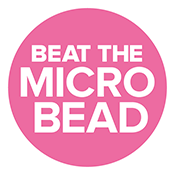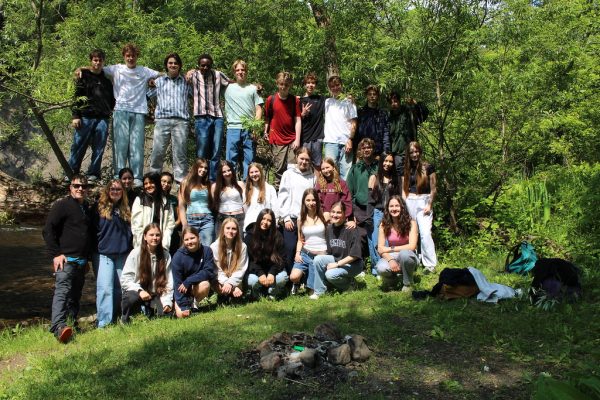Saint-Lawrence River: A micro-beads soup ?

Saint-Lawrence, a beautiful river that most of us know really well. But not so many of us knows that it’s polluted, and not just a little bit. That’s something that I hate.
I’ll explain what’s this issue.
The problem is that micro-plastic beads are found in abundance in the sediment of the bottom of the river Saint-Lawrence. This will have certainly great impacts on the environment. Plastics are shown to be poisonous for animals. Also plastics can easily enter the food chain, so the micro-plastic beads are a big environmental problem that needs to be solved rapidly. Here’s the reasons why I think Micro-plastics are bad.
But how this little balls got in the Saint-Lawrence into the first place?
This micro-plastic beads are a part of our daily routine in the morning, cause when you take your shower and wash your hair with shampoo you are using this little foes. Micro-plastic beads are used in most of the personal care products and cosmetics products, mostly in shampoo, face wash, and toothpaste as exfoliant. When the water saturated with shampoo goes through the sink it will go away with the micro-plastic. Then when it will arrive at the water filtration plant, it will be filtrated. The purified water will return in the nature or more precisely the Saint-Laurent river. Here’s the trick. Our water cleaning filters can’t stop micro-plastic beads, so they go in the Saint-Laurent river. Not a good thing at all.

How bad is the pollution?
A study of the sediment in the Saint-Laurent shows that the bed of the river is infested with micro-Beads. The average amount of micro-beads in the sediment goes from 52 beads per square meter to 13 832 beads per square meter. It’s the same situation everywhere in the Saint-Laurent. At the worst place it’s gone to 140 000 beads per square meters or 1000 beads per liters, almost the same amount as the most polluted place on earth. In a single use of some self-care product, almost 100 000 beads can go down in the sink. Imagine the number of these beads going into the river each day.
What’s the impact of this leak ?
There are a lot of bad impact that releasing the micro-plastic beads in the environment implies. First, many studies shows that plastic is bad for fish and water wildlife. It is toxic for them. Animals will eat these beads and will get intoxicated because of the plastic. Then, eventually, they will die of plastic intoxication. If they don’t, the plastic will enter the food chain and we’re in that food chain. So it’s a problem for us and for the environment, cause the plastic is destroying gradually our environment. Maybe we’re already getting poisoned to plastic by eating fish from the Saint-Laurent river. The second complication is the fact that highly toxic substances like PCB are shown to be attracted by micro-plastic beads. Micro-beads can easily enter the food chain by being eaten by little fish and they carry PCB with them. So by leaking those beads in the river it puts at risk our health and the environment on a large scale. We’re in trouble guys. We can’t just sit there and say : Hey! That’s okay the effect will fade with time! Cause the more and more we do this pollution, the more and more we’ll have of that poison circulating in the environment.

How can we stop it ?
There are two main option to stop polluting our river. The first one, the most expensive, is to install a filter that stop micro-beads on every water cleaning facility. That’s complicated and expensive because there’s a lot of water facility and also cause companies or the government will have to engineer a new filter. It can be done but there’s a much, much, easier way to have the same outcome: it’s to stop using micro-plastic beads in our self-care products. There’s plenty of other better and cleaner exfoliant that we can use. There’s even biological exfoliant that are made with parts of plants for example: blueberry and cranberry seed or dead sea salt. But the problem is that big companies like L’Oréal say that they’ll change their exfoliant for bio ones in three years. It’s too long. They can do it right now, they can  take a bio exfoliant easily cause there are a lot of them. It’s just that they’ll wait for a law that will oblige them to do this. If you don’t want to use self-care product with micro-plastic search for these plastics: polyethylene, polypropylene, polyethylene terephthalate, polymethyl methacrylate, polylactic acid, or nylon. They’re the most common.There’s an app called Beat the Micro Beads that can say if there’s micro-beads in your product but it is in development. But you can still get it on the app store .
take a bio exfoliant easily cause there are a lot of them. It’s just that they’ll wait for a law that will oblige them to do this. If you don’t want to use self-care product with micro-plastic search for these plastics: polyethylene, polypropylene, polyethylene terephthalate, polymethyl methacrylate, polylactic acid, or nylon. They’re the most common.There’s an app called Beat the Micro Beads that can say if there’s micro-beads in your product but it is in development. But you can still get it on the app store .
What have been done ?
The first state to ban the use of micro-beads is Illinois, in USA. But now, USA has voted a bill that will ban micro-plastic in cosmetics but will only be effective in 2019. For Canada, a bill will be voted soon for the ban of micro-beads all over Canada. Many party like the Green Party of Quebec or the Plastic Soup Foundation are militating to stop the use of micro-plastic. Also, many companies have stopped the use of micro-plastics. More start phasing out the micro-beads of their product. It’s starting to look good.
So that’s my issue with the Micro-beads. It’s easy to stop micro-beads and it’s the wisest choice to help the environment. Now I’m just asking myself one question: Is the Saint-Laurent river a plastic soup?





